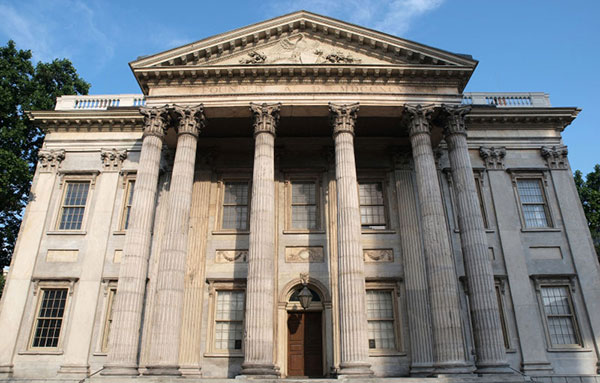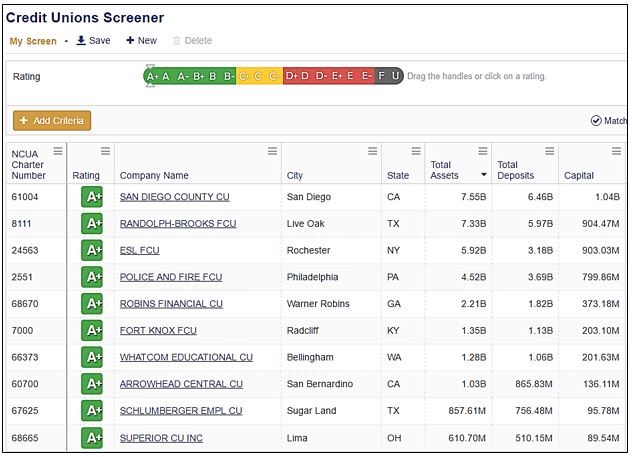10 Largest and Safest Credit Unions for Your Money
Weiss Safety Ratings (comprised of bank, credit union and insurance company ratings) represent our opinion of the financial well-being of an institution. The higher the rating, the more likely the business will remain financially stable in good times or bad. They are designed to help consumers find the best institutions to entrust with their hard-earned savings and retirement money and to provide financial security.
Credit unions are an alternative to banks. They offer the exact same services as banks for an everyday person, often at a much lower cost. With the recent bank scandal at Wells Fargo, some might want to explore different financial options.
Based on our safety ratings, we narrowed down to ten largest and highest rated credit unions in the country. These ten are at the top of our ratings, with an A+ safety rating, and are sorted in a descending order based on the total assets.
If you are not in one of these states, you can use the credit unions screener to identify your state’s biggest and safest Credit Union.
Here’s a summary of differences between banks and credit unions.
| Banks | Credit Unions | |
| Access | Practically anyone is free to open an account or request a loan from any bank. There are no membership requirements. | Credit unions are set up to serve the needs of a specific group who share a “common bond.” In order to open an account or request a loan, you must demonstrate that you meet the credit union’s common bond requirements. |
| Ownership | Banks are owned by one or more investors who determine the bank’s policies and procedures. A bank’s customers do not have direct input into how the bank is operated. | Although they may be sponsored by a corporation or other entity, credit unions are owned by their members through their funds on deposit. Therefore, each depositor has a voice in how the credit union is operated. |
| Dividends and Fees | Banks are for-profit organizations where the profits are used to pay dividends to the bank’s investors or are reinvested in an effort to increase the bank’s value to investors. In an effort to generate more profits, bank services and fees are typically more costly. | Credit unions are not-for-profit organizations. Any profits generated are returned to the credit union’s members in the form of higher interest rates on deposits, lower loan rates, and free or low-cost services. |
| Management and Staffing | A bank’s management and other staff are employees of the bank, hired directly or indirectly by its investors. | Credit unions are frequently run using elected members, volunteer staff, and staff provided by the credit union’s sponsor. This helps to hold down costs. |
| Insurance | Banks are insured by the Federal Deposit Insurance Corporation, an agency of the federal government. | Credit unions are insured by the National Credit Union Share Insurance Fund, which is managed by the National Credit Union Administration, an agency of the federal government. |


